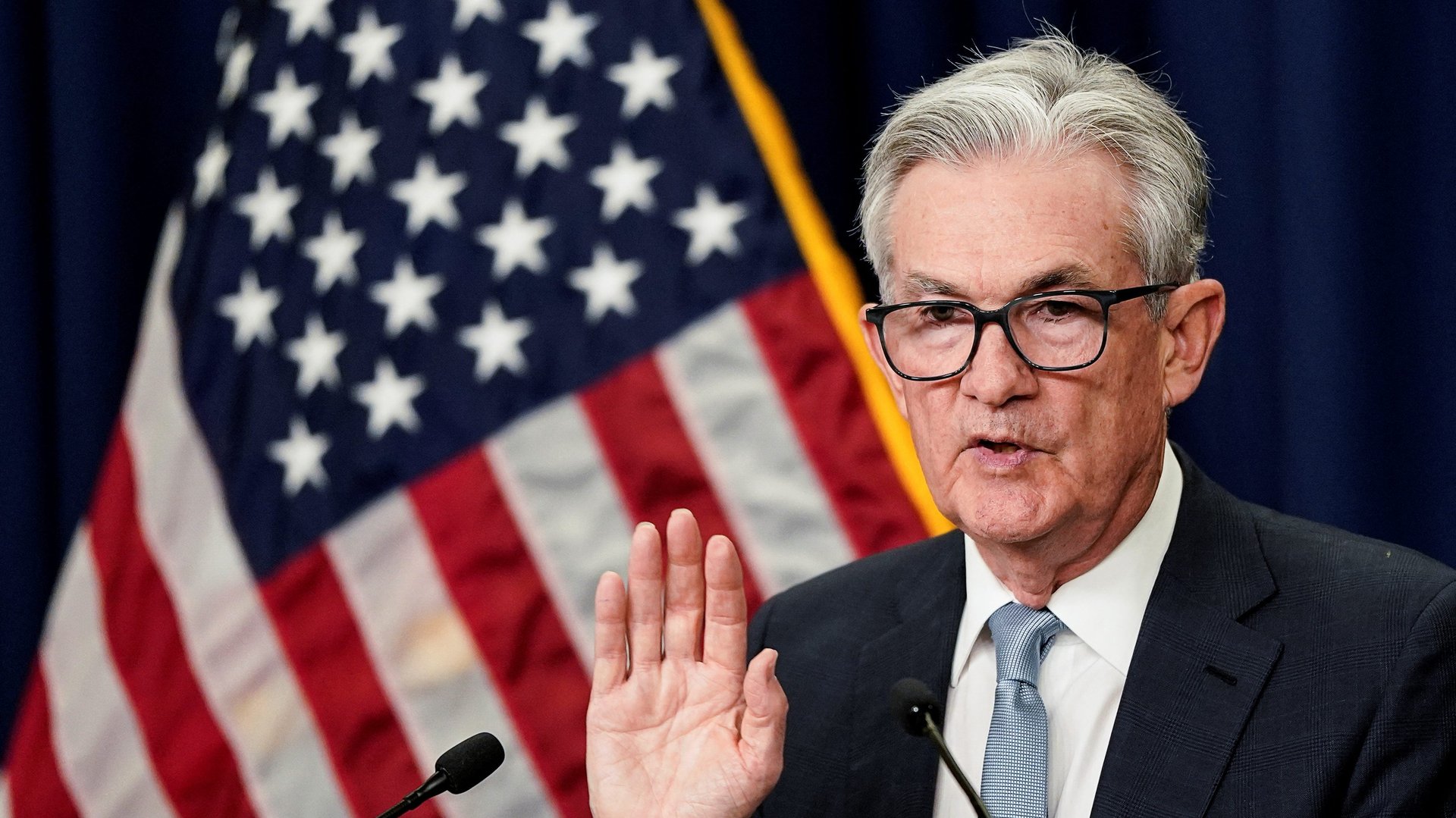The Fed is hiking rates by 75 basis points—and predicting 3 years of rising unemployment
The US Federal Reserve called an end to the job market recovery as it struggles to tame inflation. The central bank raised interest rates by three-quarters of a percentage point to 1.6%, the highest hike since 1994, and its officials are now predicting unemployment will rise for the next three years.


The US Federal Reserve called an end to the job market recovery as it struggles to tame inflation. The central bank raised interest rates by three-quarters of a percentage point to 1.6%, the highest hike since 1994, and its officials are now predicting unemployment will rise for the next three years.
“From the standpoint of our congressional mandate to promote maximum employment and price stability, the current picture is plain to see,” said Fed chair Jerome Powell. “The labor market is extremely tight, and inflation is much too high…the American economy is very strong and well positioned to handle tighter monetary policy.”
Until now, the Fed had been hiking rates by 50 basis points each meeting. Only one member of the Federal Open Market Committee, the usually hawkish president of the Kansas City Federal Reserve Esther George, dissented from the latest decision in favor of a half point hike. “This is an absolute dog’s breakfast of a decision, they pulled 25 bps forward and declined to guide dramatically tighter long-term, and a historical hawk dissented,” said George Pearkes, an investment analyst at Bespoke Investment Group, in a tweet. “What a mess.”
The Fed misread inflation’s trajectory
Powell noted that Fed officials had expected to see inflation flattening and beginning to decline by this point. Consumer prices rose by an annual 8.6% in May, the highest annual rate since 1981.
The Fed chair left another 0.75-percentage-point rate hike on the table. “Clearly today’s 75 basis point increase is an unusually large one, and I do not expect moves of this size to be common,” Powell said. “From the perspective of today, either a 50 basis point or a 75 basis point increase seems most likely at our next meeting.”
At this point, the Fed is aiming to bring down inflation by killing some consumer demand. Raising the interest rate won’t address any of the issues that are pushing up prices, like supply chain snags and Russia’s Ukraine invasion. “There are many things we can’t affect,” Powell said. “And those would be the commodity price issues that we’re having around the world due to the war in Ukraine and and the fallout from that.”
Will there be layoffs?
The Fed expects higher rates combined with higher commodity prices will start cooling off the labor market in coming months. In their summary of economic projections, Fed officials see unemployment climbing over the next three years, whereas three months ago they had predicted it wouldn’t start rising until 2024.
But some economists fear that if employment falls enough to weigh down consumer spending, the US economy might find itself in a situation in which employers shed jobs as Americans spend less triggering even more layoffs. “If employment declines far enough that nominal spending from the household sector begins to fall, we may see pernicious feedback loops in which employers respond to weak household demand with expanded layoffs.,” noted economists at Employ America, a labor advocacy think tank.